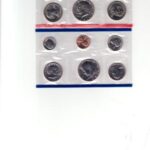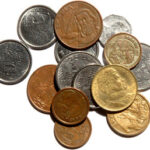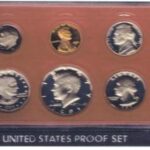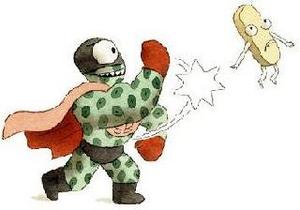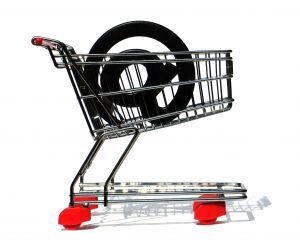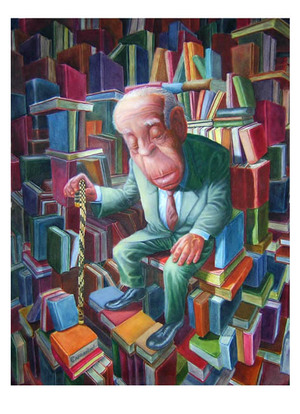Canadian coins are beautiful, distinct tributes to the nation’s nature and heritage. But how can a person collect Canadian coins when they’re on a budget or – as with the case with many American collectors – they are only scarcely able to find Canadian coins in pocket change? Canadian proof-like sets offer the collector of Canadian coins an affordable and easy way to assemble a beautiful collection of the coins of the North – way up north.
Canada first produced its proof-like sets in 1954 and generally include one example of each circulating coin the mint produced in a given year. Though the Royal Canadian Mint now sells “Uncirculated Sets” in lieu of the “proof-like sets” of Canada’s yesteryear, this article will consider the two terms as synonymous. Similar sets the Royal Canadian Mint has produced over the decades is a “proof set” and “specimen set.”
The term “proof-like” may throw some collectors off as to understanding exactly what the finish quality is. In fact, traditional proof-like Canadian coins are uncirculated examples and are struck with a finish similar, but not quite equitable to, the quality of a typical proof coin. Collectors of United States coin can probably best compare the nature of Canadian proof-like coins to those contained in the Special Mint Sets the U.S. Mint struck during 1965-1967. While the surfaces of proof-like coins are usually quite brilliant, they are not as mirror like or reflective as bona fide proof coins.
Canadian proof-like sets have been quite popular with collectors both in and outside of Canada for decades. Numismatists appreciate the crisp and clean designs the coins bear, the high-quality finish that the Royal Canadian Mint produces, and lovers of nature and history have long enjoyed the images on many Canadian coins. The obverse of the coins bear an image of the reigning throne—Queen Elizabeth II, featured on the front of Canadian coins since 1953—and the reverse of the nation’s coins usually feature some aspect of the country’s natural beauty. The reverse of the cent depicts a maple leaf, the five-cent coin a beaver. The dime shows a majestic schooner floating in water, and the quarter a regal caribou. The half-dollar pays homage to the nation’s coat of arms, and the dollar, since 1987, a loon (Canada dollar issues previous to 1988 depict a canoe with an Indian and a Voyageur under the Northern Lights). In recent years, the Royal Canadian Mint has also included its $2 coin, featuring a polar bear.
Canadian proof-like sets were housed in cardboard holders from 1954 to 1960 before being issued in Pliofilm in 1961. Pliofilm looks and feels very much like cellophane and, in general, the Pliofilm-issued proof-like sets resemble the U.S. proof sets issued during 1955-1964. Unlike the U.S. proof sets of that era, though, the Canadian proof-like sets do not contain any mint medal or token. Until the time that Canada began offering the $2 coin, in 1996, the proof-like sets contained six pouches, each holding one of six coins. The Royal Canadian Mint imprinted its name in the middle lengthwise seal in the set.
Proof-like sets are quite popular for various reasons. They are great birth-year, anniversary, and graduation commemoratives, and they certainly allow collectors to obtain uncirculated examples of Canadian coins easily and usually inexpensively. One of the most perennially popular proof-like sets is the 1967 “Wildlife” set. Marking the centennial of Canada’s confederation, the wildlife series includes coin whose reverses depict various animals of Canada’s natural inhabitants. Among the most famous of these, perhaps, is the Goose dollar. Making the 1967 proof-like set even more significant is that it includes the last 80%-silver coins Canada ever produced for circulation. In 1968, the transition to a nickel composition began for the ten, twenty-five, fifty cent pieces and for the dollar coin.
The 1970 proof-like set has also been another collector favorite for its inclusion of the beautiful Manitoba Centennial commemorative dollar, and the 1987 set, which includes the last of the Voyageur dollars. 1988 was the first proof-like set to feature the Loon dollars (first released in 1987, it is now the current dollar coin; it is smaller than the Voyageur dollars, is golden colored, and depicts a loon wading in water). The 1996 proof-like set introduces the $2 coin, a coin which has a nickel outer ring with inscriptions and the date and a golden-colored, copper center plug whose obverse depicts Queen Elizabeth; the center’s reverse displays an image of a polar bear.
Proof-like sets range in price; while the earliest of the cardboard proof-like sets can cost in the hundreds of dollars to obtain, the bulk of the Pliofilm sets from the 1960s to the current cost between $5 and $25, with most close to the lower end of that spectrum. The silver sets of the 1960s have seen an increase recently, as the price of silver has increased. The proof-like sets from 1954 to 1967 inclusive contain roughly 1.1 ounces of silver, making them of particular interest to bullion investors. Many of these sets have been disassembled to obtain coins for individual collecting motives or for melt value. The 1967 set has for years been highly sought after by collectors and, for reasons of both artistic interest and investment potential, has seen fervent popularity.
To order a current uncirculated set (essentially the equivalent of the older proof-like sets) or to view other coin current Canadian coin products, you can peruse the Royal Canadian Mint’s online catalog at http://www.mint.ca. If you are interested in purchasing older proof-like sets, you will have to consult a coin dealer. While a coin dealer local to you may or may not deal with Canadian coins, many dealers online do commonly buy and sell Canadian proof-like sets.
Resources:
http://en.wikipedia.org/wiki/Canadian_coins
http://www.mint.ca

